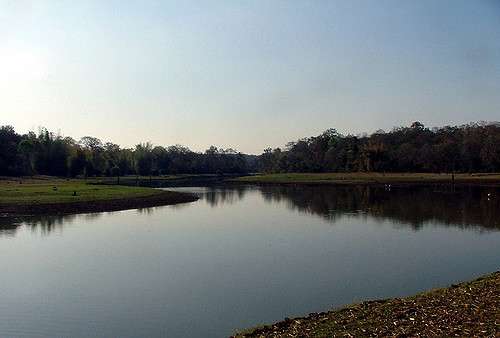River length: 240 km
Basin area: 7040 sq km
Population in basin: >1 million
States in basin: Kerala, Karnataka, Tamil Nadu

Major cities using water
Bengaluru (8.42 million), Mysuru (887,446), Wayanad district (816,558)
River Depletion
- Water depletion: 27% (1972-2013)
- Dry season drought risk: Low
- Monsoon flood risk: Extremely High
- Seasonal variability of water levels: Medium to High
Economic & Environmental Significance
- The Kabini reservoir is the source of irrigation for around 45,000 hectares and provides 80MW of power.
- The Kabini flows through the Wayanad Wildlife Sanctuary, Mudumalai National Park, Bandipur National Park and Nagarhole National Park, which are part of the Nilgiri Biosphere Reserve, a UNESCO World Heritage Site and home to tigers, leopards, four types of deer, sloth bear, gaurs and elephants.
Recent Disasters
The Kabini is a major tributary of the Kaveri, and originates in Kerala’s Wayanad district. Wayanad faced a drought in 2016 and 2017, as the Kabini went dry after the monsoons. This has led to an ironic, unfortunate situation where those living along the banks of the river depend on water tankers for their needs. Researchers have blamed this situation on the destruction of the shola forests in the river basin. The removal of tree cover also leads to flood situations when rainfall gets heavy.
Spiritual & Cultural Significance
The Kabini is also known as the Kapila and derives its name from Kapila Maharishi. The famous Shree Kanteswara at Nanjangud is located on the banks of the river. Nanjangud is sometimes referred to as Dakshin Kashi
References
- http://www.india-wris.nrsc.gov.in/wrpinfo/index.php?title=WRIS_Publications#Basin_Reports
- http://www.india-wris.nrsc.gov.in/HydroObservationStationApp.html
- http://shodhganga.inflibnet.ac.in/bitstream/10603/79189/3/12_chapter2.pdf
- http://timesofindia.indiatimes.com/city/kozhikode/Kabini-dries-up-farmers-hit/articleshow/52101127.cms
- http://www.thehindu.com/news/national/karnataka/inflow-into-kabini-dam-up-flood-alert-issued/article4881775.ece
- http://waterresources.kar.nic.in/river_systems.htm
- https://news.webindia123.com/news/Articles/India/20170721/3151512.html
- http://www.dnaindia.com/bangalore/report-kabini-reservoir-full-bangalore-can-now-get-more-water-1727484
- http://www.deccanherald.com/content/152362/wild-encounters.html
- Photo Credit: https://www.flickr.com/photos/chandanb/403616551/